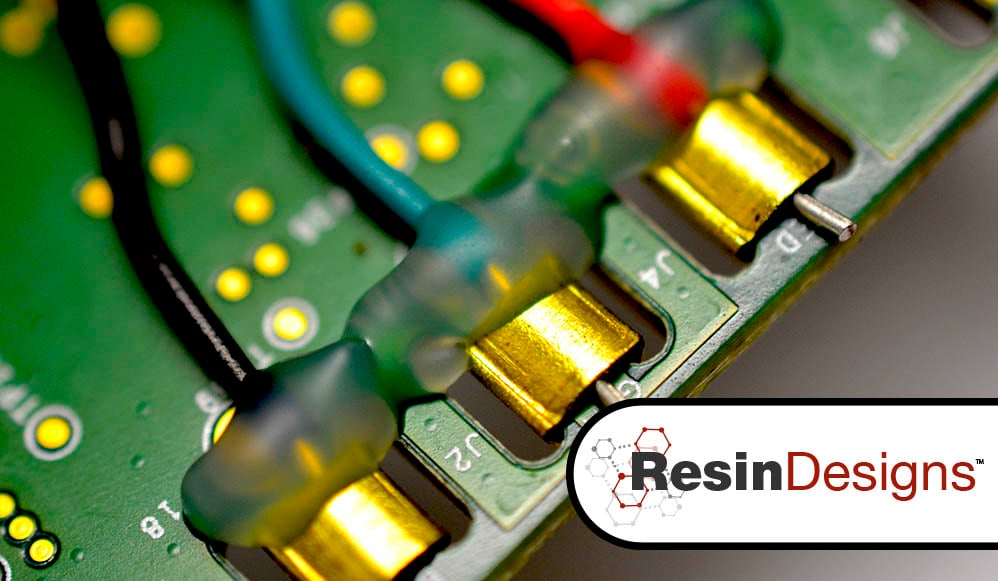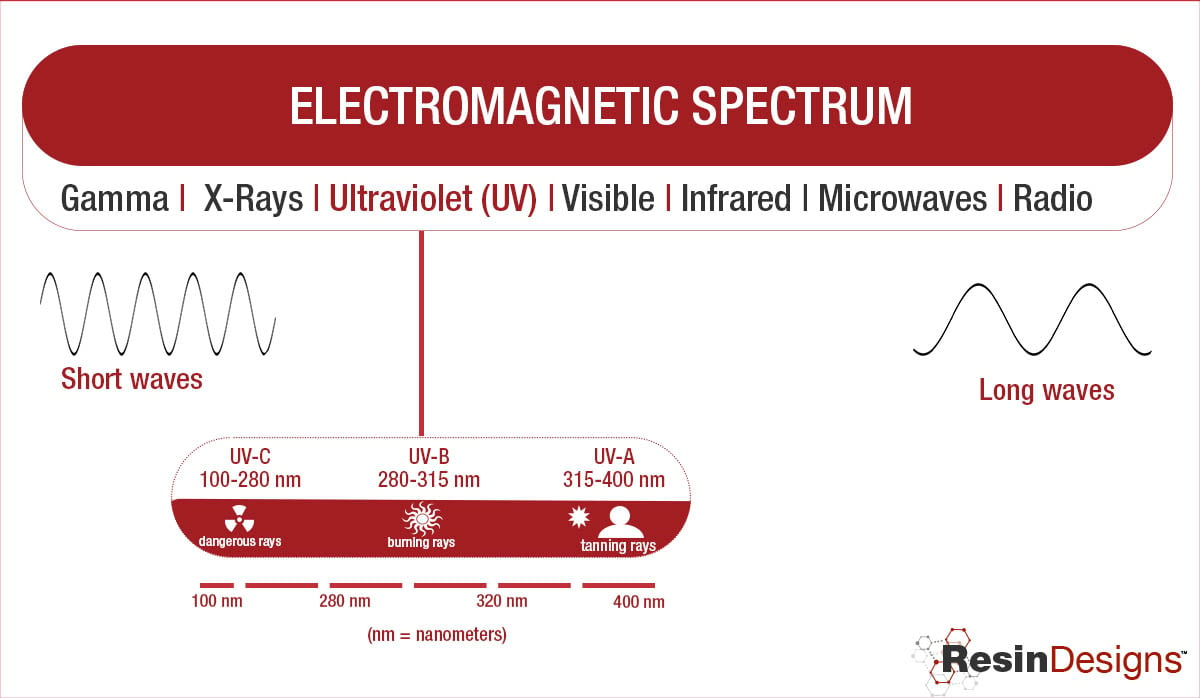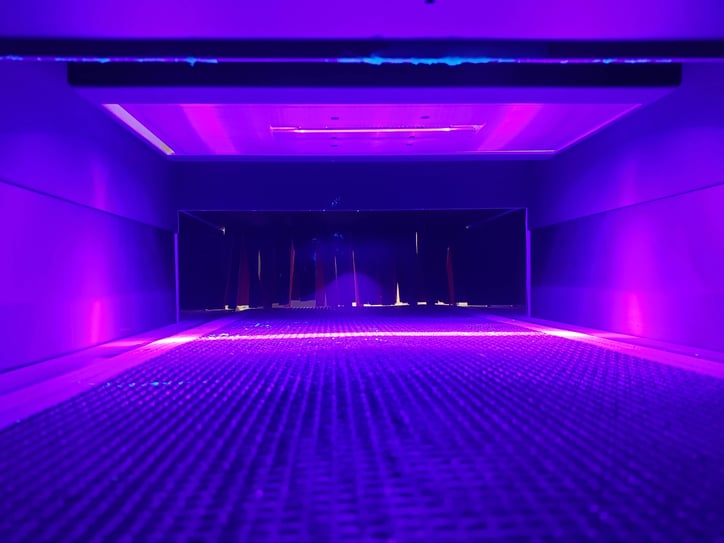 The past few decades have seen the emergence and use of ultraviolet (UV) light cured polymers across a range of industries and applications. UV cured polymers have proven their value in applications such as printing inks, adhesives, and protective coatings among others.
The past few decades have seen the emergence and use of ultraviolet (UV) light cured polymers across a range of industries and applications. UV cured polymers have proven their value in applications such as printing inks, adhesives, and protective coatings among others.
One of the first industries to accept and utilize UV curing polymers was the printing industry. Existing technology was mainly polymers and inks dissolved or suspended in highly flammable and hazardous solvents such as Toluene and Xylene. UV curable inks and coatings were ideally suited for this industry. Their nearly immediate curing allowed for high speeds, and their 100% solids composition often eliminated the need for pollution and fire control technology.
More recently, polymer scientists have increased their understanding of UV curing, and UV light generation has become more versatile. It has been proven possible to extend the advantages of UV technology beyond printing inks and thin coatings into thicker and tougher products such as adhesives and protective coatings. Assembly designers and engineers often have questions about the suitability of UV materials and whether they may be a better choice as compared to more traditional approaches to curing such as solvent-borne polymers and multiple-component formulas. This discussion is presented to help answer these questions.
Related article: The Various Methods for Curing UV Adhesives
The past few decades have seen the emergence and use of ultraviolet (UV) light cured polymers across a range of industries and applications. UV cured polymers have proven their value in applications such as printing inks, adhesives, and protective coatings among others.
One of the first industries to accept and utilize UV curing polymers was the printing industry. Existing technology was mainly polymers and inks dissolved or suspended in highly flammable and hazardous solvents such as Toluene and Xylene. UV curable inks and coatings were ideally suited for this industry. Their nearly immediate curing allowed for high speeds, and their 100% solids composition often eliminated the need for pollution and fire control technology.
More recently, polymer scientists have increased their understanding of UV curing, and UV light generation has become more versatile. It has been proven possible to extend the advantages of UV technology beyond printing inks and thin coatings into thicker and tougher products such as adhesives and protective coatings. Assembly designers and engineers often have questions about the suitability of UV materials and whether they may be a better choice as compared to more traditional approaches to curing such as solvent-borne polymers and multiple-component formulas. This discussion is presented to help answer these questions.
What Is UV Light?
UV light is generally considered the portion of the electromagnetic spectrum of shorter wavelength and immediately below visible light. Visible light of various colors is of wavelengths ranging from 400nm (violet) up to 700 nm (red). Immediately below this visible range of 400 to 700nm is the ultraviolet spectrum which ranges from approximately 100 to 400nm. UV light is not generally visible to the naked eye and is often further categorized as UVA (315-400nm), UVB (280-315nm), and UVC (100 to 280nm).

What Is UV Curing?
UV curing or ultraviolet curing utilizes high-intensity ultraviolet light to generate a photochemical reaction, which often instantly polymerizes adhesives, inks and coatings. There are multiple ways to produce commercially available UV light using electrically or microwave energy excited gases doped with various impurities. Each bulb type and doping formula can produce different quantities and intensities of the various sub-categories of UV such as UVA, UVB, and UVC. More recently, UV emitting LEDs have been developed, which are generally limited to producing a single wavelength of UV light. While their use is more limited, UV emitting LEDs have shown great potential in minimizing energy usage and extending service life of UV curing equipment.
What Types of Polymers Can Be UV Cured?
There are traditionally two main types of photochemical reactions and polymers that are used in the design of UV curable adhesives and coatings:
- free radical cured acrylates
- cationic cured epoxies
A basic explanation of the mechanism behind each of these will be discussed further in the next section.
How Does UV Curing Work?
UV adhesives and coatings constitute an all-inclusive, single component solution. The base polymer and photosensitive initiator are all contained in one package. To make the product, liquid monomers and oligomers are mixed with photo-initiators. As mentioned earlier, there are two different types of photochemical reactions: free radical and cationic.
In free radical reaction, energy from light radiation is absorbed by the photo-initiator. The excited photo-initiator releases a free radical that initiates the polymerization. In free radical UV curing, the entire volume of polymer must be exposed to UV light in order for the reaction to be completed. In cases where there are shadowed or dark areas where light cannot penetrate, it is necessary to add an additional curing mechanism such as moisture cure.
Cationic reactions are slightly different as the energy absorbed releases a positively charged ion instead of a free radical. During the polymerization of a cationic reaction, more positively charged ions are released. A unique property of cationic UV curing is that the reaction perpetuates itself once initiated with UV light. This allows the cure to occur after light exposure unlike free radical polymerization. Also unlike free radical curing, cationic curing is capable of curing adhesive and coatings in shadowed or dark areas, which can be an advantage in three-dimensional device assembly as well as in bonding of opaque materials where UV light cannot penetrate completely.
Benefits of UV Curing Adhesives and Coatings
UV curing offers an array of benefits when compared to traditional curing approaches such as solvent-borne polymers and two-component materials. These include
- reliable and consistent curing
- fast curing and production rates
- less floor space required
- minimal environmental or workplace safety controls required
- potentially improved physical properties.
Reliable and Consistent Curing
UV curable polymers cure nearly immediately, consistently, and thoroughly with fairly simple exposure to UV light. Traditional curing mechanisms such as two-component cures and moisture curing materials can be much more complex and process dependent in curing. Two-component products, for example, depend on precise mix ratios and require consistent mixing to cure properly. They can also generate unwanted heat during curing that can affect delicate components such as electronics. Moisture curing materials depend on atmospheric humidity for curing, and as a result, time to completion can vary greatly.
Fast Curing and Production Rates
Traditional curing mechanisms like solvent-borne drying, two-component cures, and moisture curing can take from minutes to days for completion. There are, as a result, limits on speeds of production where curing is the bottleneck. The nearly instantaneous cure of UV curable polymers often leads to dramatic improvements in productivity and line speeds. This also results in reduced labor and overhead costs per unit, which can be of enormous advantage in high volume industries such as automotive and white goods.
Decreased Floor Space Requirements
UV curing processes generally require considerably less floor space than drying ovens. UV curing lamps are typically the size of a large photocopier, while traditional drying tunnels can be between twenty and thirty feet in length. In the case of two-component cure mechanisms, curing can take days, meaning multiple days of finished product must be stored in racks requiring substantial floor space. UV materials are cured and ready to ship nearly immediately, drastically reducing work in progress (WIP).
Minimal Environmental and Worker Safety Controls Required
Solvent-borne adhesives are typically comprised of less than half by volume active coating with the remaining half or more being hazardous and flammable organic solvents. These solvents present a serious danger to workers when handling and in storage as related to their flammability as well as hazards of skin and inhalation exposure. In addition, if used in larger volumes, the volatile solvents will be released into the environment unless captured or controlled with incineration or filtering equipment.
UV curable polymers on the other hand are usually 100% solids with no hazardous carrier solvents. While the materials remain hazardous requiring some worker safety controls, there is generally no serious flammability issue, and there is usually no need to employ incineration or other environmental protections.
Improved Physical Properties
There is great flexibility in the formulation of UV curable coatings and adhesives. In general, the resulting polymer can be more highly cross-linked and cured in a shorter time as compared to other technologies discussed earlier. The result is that UV materials often can have higher performance in areas such as gloss, abrasion resistance, and chemical resistance. It is also often possible to customize properties such as hardness, elongation, and flexibility within very tightly controlled parameters.
As a supplier of electronics protection polymers and coatings, Chase Corporation and our employees can help you with an unbiased approach to evaluating your application and process. We’ll show you how to maximize efficiency, minimize cost, and improve product reliability. Our outstanding manufacturing and technical support groups can provide your organization with reliable global supply, unmatched quality, and superior technical support.
Please contact us today to discuss your application.









